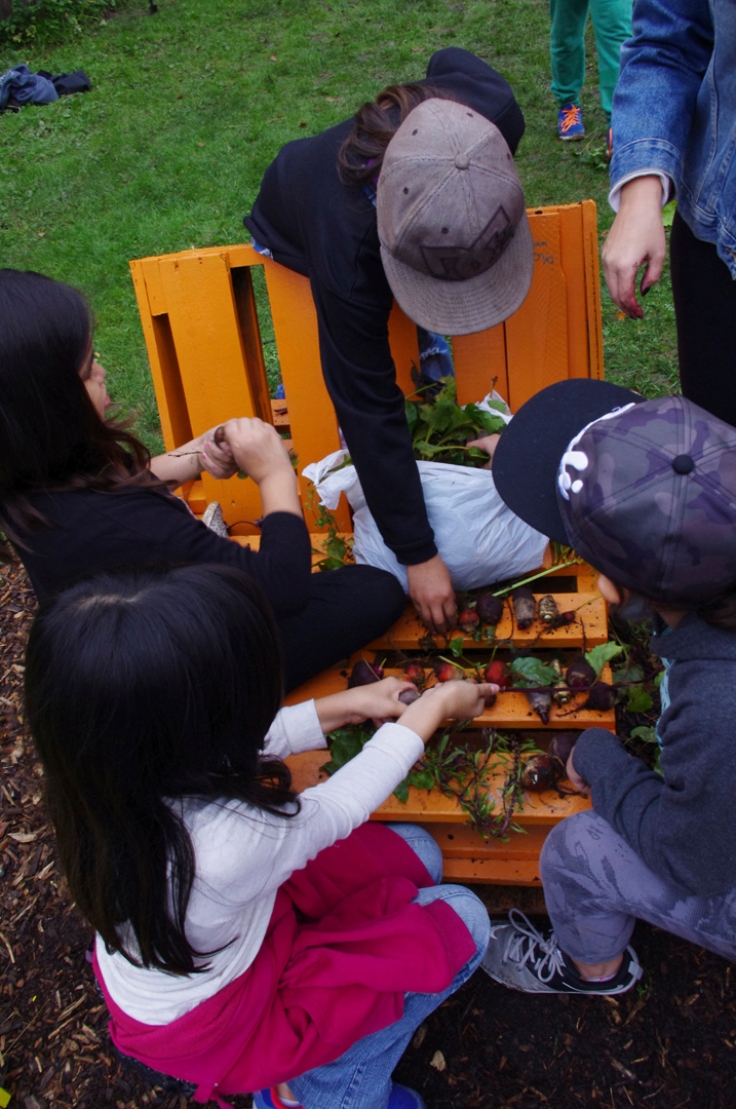Out behind the Britannia Elementary School is our Potato Farm, as we like call it. Four large potato boxes provide our grade 3 and 4’s the full food cycle experience of planting the spuds in the spring, watering, mounding, watching the plants grow, digging up the spuds in the fall, then preparing and eating what they grew. For the kids, the entire process is akin to a boisterous party as the children scream with pleasure, especially when digging up the potatoes, as if they are seeking lost treasure.
Planting the potatoes starts with the grade 3’s, usually in May. By October the spuds are ready for harvesting and for those students who are now in grade 4, its time to dig them all up. This year we dug up about 100 potatoes or a milk crate full. The students will then clean, chop, and roast the potatoes along with beets, parsnips, and turnips that they collected from another garden area. Each year a new group of Grade 3’s get to learn all about potatoes. The potato planting is extremely popular for the children and provides a very practical and fun learning experience that sticks in the kid’s minds.
Most students are very knowledgeable about food growing and healthy eating. To our surprise, many describe liking veggies such as kale and brussel sprouts. However, many of our students live in apartments and don’t have gardens at home, so are super keen to work in our gardens and grow their own food.
The Britannia School Gardens are quite extensive with four large garden areas that provide food growing learning for several classes in both the secondary and elementary schools on site. Our garden programs run year round and engage about 100 students each year. The Potato Farm is our most enjoyable project, simply because the younger students are so enthusiastic and excited to learn. As an organizer, to witness this level of engagement is very satisfying.
Working with the younger students is strategic. The younger students are very inquisitive and more open to gardening than older students. The Potato Farm and other garden activities familiarize these students with the garden earlier so they are comfortable working in the gardens as they graduate into secondary school. They are also more knowledgeable and less shy and have established a good relationship with the school garden organizers.
We are very proud of our garden programs here at Britannia, which connect students directly to the land and source of food along with issues of environmental sustainability. Students are gaining important skills and knowledge that best come through such hands-on learning. For many students, their time spent in the gardens, digging up potatoes and other veggies, are some of their most memorable school activities.













